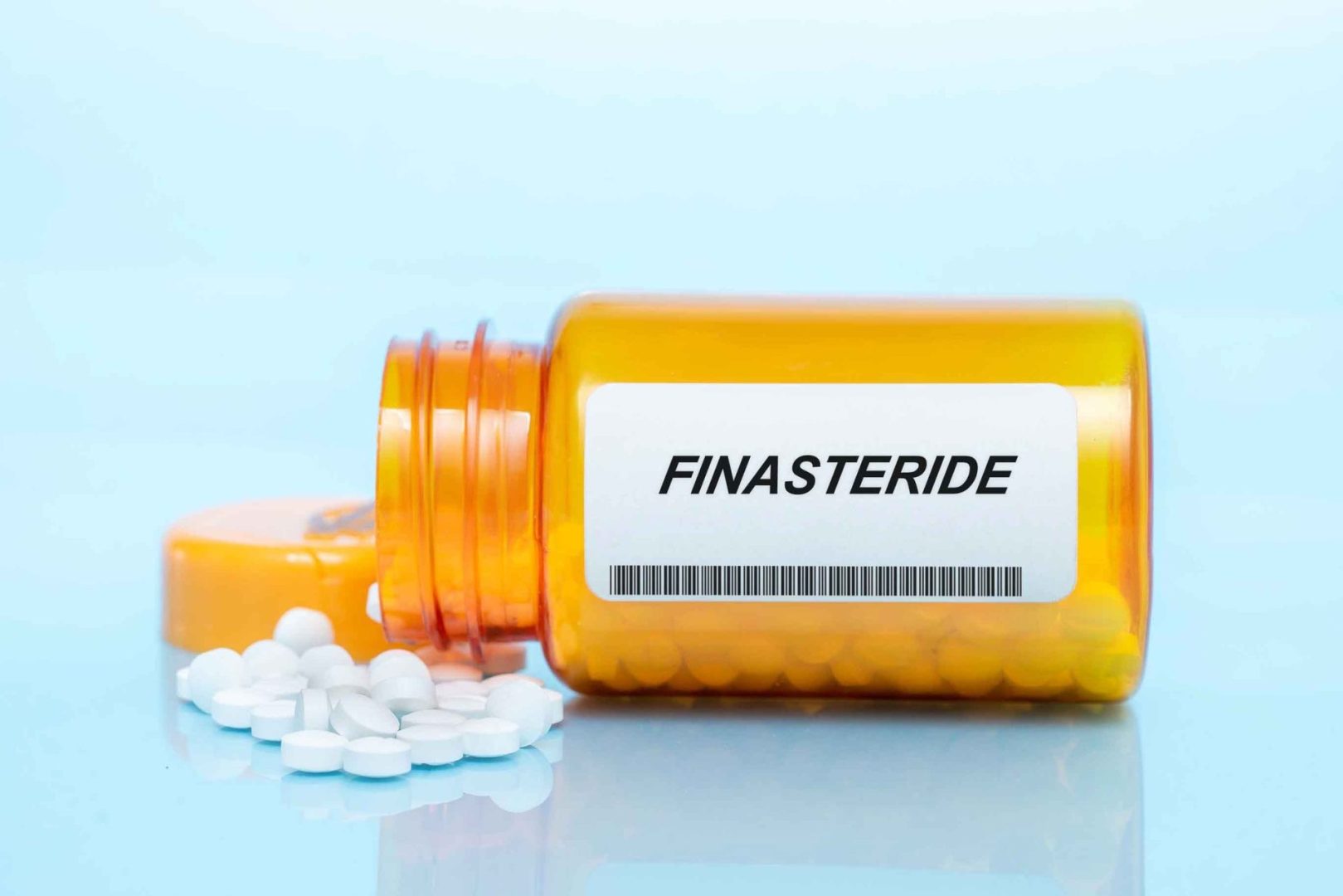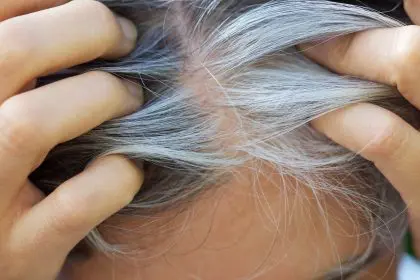The FDA has issued an important alert regarding topical finasteride, highlighting significant health risks that many users remain unaware of until experiencing adverse effects. This warning comes amid a dramatic 200% increase in finasteride prescriptions among men 25 and older over the past seven years, fueled largely by the convenience of telehealth services.
Topical finasteride works by inhibiting the conversion of testosterone into dihydrotestosterone (DHT), the hormone primarily responsible for male pattern hair loss. While this mechanism effectively slows hair loss for many users, the FDA’s recent findings reveal concerning systemic effects when the medication absorbs through the skin into the bloodstream.
Most concerning is that many patients report receiving minimal information about potential risks before beginning treatment. The lack of awareness has left many users unprepared for side effects that sometimes continue long after stopping the medication.
The growing popularity of these treatments coincides with the rise of online telehealth platforms offering prescription medications with minimal medical oversight. This trend has made obtaining finasteride significantly easier than through traditional medical channels, but potentially at the cost of reduced patient education about serious risks.
Documented side effects raise alarm bells
From 2019 to 2024, the FDA documented 32 cases of adverse events specifically linked to topical finasteride applications. This number likely represents only a fraction of actual cases, as many adverse drug reactions go unreported to regulatory authorities.
The reported side effects span both physical and psychological domains, creating a concerning pattern of multi-system impact. Sexual dysfunction ranks among the most common complaints, with erectile dysfunction and decreased libido affecting quality of life and relationships. Many users report these symptoms developing shortly after beginning treatment.
Cognitive impacts include brain fog, memory issues, and difficulty concentrating – symptoms that particularly affect professional performance and daily functioning. These cognitive effects can begin subtly before becoming more pronounced, leading some users to initially attribute them to other factors.
Psychological effects prove equally troubling, with documented cases of anxiety, depression, and in severe instances, suicidal ideation. The psychological burden appears particularly pronounced because many users begin treatment without awareness of these potential outcomes.
Physical symptoms beyond sexual function include testicular pain, fatigue, and insomnia, creating a constellation of effects that significantly impact overall wellbeing. The combination of physical, cognitive and psychological symptoms creates a particularly challenging situation for affected individuals.
Most alarming is the potential persistence of these effects even after discontinuation of the medication – a condition sometimes referred to as post-finasteride syndrome (PFS). This prolonged duration of side effects has created significant concern within the medical community and among patients considering treatment options.
Compounding pharmacies and regulatory gaps
Unlike oral finasteride (branded as Propecia and Proscar), which received FDA approval in the 1990s, no topical formulation has undergone the rigorous clinical trial process required for official approval. This lack of regulatory oversight creates significant variation in product composition and quality.
Most topical finasteride products come from compounding pharmacies, which create customized medication formulations not commercially available. While compounding serves an important medical purpose for specific patient needs, it operates with less stringent oversight than commercial pharmaceutical manufacturing.
The concentration of finasteride in these compounds can vary significantly, potentially leading to unpredictable absorption rates and systemic exposure. Without standardization, patients may receive widely varying doses, complicating the risk assessment process.
Additionally, topical formulations often combine finasteride with other active ingredients like minoxidil, creating complex products with potential interaction effects that remain inadequately studied. The compatibility of these compounds and their combined safety profile lacks comprehensive evaluation.
This regulatory gap places greater responsibility on prescribing physicians to thoroughly inform patients about potential risks – a process potentially compromised when prescriptions originate through brief online consultations. The situation creates a concerning disconnect between the seriousness of potential side effects and the casual nature of some prescribing practices.
Telehealth prescribing raises consumer protection questions
The dramatic increase in finasteride prescriptions correlates directly with the expansion of telehealth services offering these medications through streamlined online processes. While improving access for those without easy healthcare availability, this convenience potentially comes at the cost of reduced patient education.
Some telehealth platforms do not require video or phone consultations before issuing prescriptions, instead relying on questionnaires that may not fully communicate risk information or allow for patient questions. This abbreviated consultation process potentially undermines informed consent principles essential to responsible healthcare.
The online prescribing model often emphasizes convenience and quick results, potentially downplaying risk discussions that might discourage potential customers. This business approach fundamentally differs from traditional medical practice models prioritizing patient welfare above other considerations.
Even platforms claiming to provide comprehensive side effect information often present this material in dense text formats that many patients may not fully review before proceeding with treatment. Without direct professional interaction, patients lose the opportunity to ask clarifying questions or express concerns.
Medical professionals express particular concern over the absence of follow-up protocols within many telehealth systems. Without scheduled check-ins to assess for developing side effects, patients may continue treatment despite experiencing early warning signs that would typically prompt medication adjustment in traditional healthcare settings.
The ease of obtaining prescription medications online represents a fundamental shift in healthcare delivery that potentially compromises patient safety when involving medications with significant risk profiles like finasteride. This convenience-safety tradeoff requires careful consideration by both regulatory authorities and consumers.
The importance of informed medical guidance
The complexity of finasteride’s risk profile makes qualified medical consultation essential before beginning treatment. Dermatologists emphasize that proper evaluation should include discussion of family history, personal medical history, and consideration of alternative treatment options with potentially lower risk profiles.
In-person dermatology appointments allow for comprehensive evaluation of hair loss patterns and causes, potentially identifying conditions requiring completely different treatment approaches. This thorough assessment proves impossible through photograph-based online evaluations with limited medical history review.
Professional medical guidance also provides essential context for understanding the actual statistical likelihood of experiencing adverse effects, which varies based on individual risk factors. This nuanced risk assessment helps patients make informed decisions aligned with their personal risk tolerance and priorities.
Medical professionals can further monitor for early signs of adverse reactions, potentially discontinuing treatment before effects become severe. This oversight represents a critical safety protocol largely absent in minimal-contact telehealth models.
Licensed healthcare providers can also discuss the full spectrum of available hair loss interventions, many with established safety records and minimal side effect profiles. These alternatives may provide suitable options for patients concerned about finasteride’s risk profile.
The value of this medical guidance extends beyond the initial prescription decision to ongoing monitoring and adjustments as needed. Regular follow-up creates opportunities to assess treatment effectiveness while watching for developing side effects, optimizing both safety and efficacy.
Understanding finasteride’s absorption through skin
The skin represents a significant route of drug absorption, with molecular properties determining how readily substances enter the bloodstream after topical application. Finasteride’s molecular structure unfortunately allows for substantial systemic absorption, explaining why topical application doesn’t necessarily prevent systemic side effects.
Several factors influence the degree of absorption, including the specific formulation, concentration, application area, and individual skin characteristics. Products using penetration enhancers to improve hair follicle delivery may simultaneously increase systemic absorption, creating a challenging balancing act between efficacy and safety.
Application technique significantly impacts absorption rates, with larger quantities and wider application areas increasing systemic exposure. Without standardized application instructions and professional oversight, users may inadvertently increase their risk through improper usage patterns.
Skin condition also affects absorption, with damaged or inflamed skin allowing greater medication penetration. This creates potentially dangerous scenarios where absorption increases precisely when users might apply more product due to perceived ineffectiveness on damaged scalps.
The scalp itself has relatively high absorption capacity compared to other body areas, further complicating the risk assessment for topical finasteride products specifically designed for scalp application. This regional variation in skin permeability remains an underappreciated factor in understanding topical medication risks.
Research into topical finasteride formulations continues exploring methods to maximize local effects while minimizing systemic absorption, but current commercially available compounds lack the sophisticated delivery systems that might achieve this optimal balance.
Making informed decisions about hair loss treatment
Those considering hair loss treatments should approach the decision with thoroughness rather than urgency, despite the emotional impact of progressive hair loss. Taking time to understand available options and their respective risk profiles ultimately leads to more sustainable treatment decisions.
Consulting with board-certified dermatologists provides the most reliable foundation for hair loss treatment decisions. These specialists can accurately diagnose the specific type of hair loss and recommend appropriate evidence-based interventions matched to individual circumstances.
When geographic or financial constraints make traditional appointments challenging, prioritizing telehealth services that require actual video consultations with licensed physicians represents a meaningful compromise. These visual interactions allow for more thorough assessment and patient education than text-based systems.
Research beyond marketing materials proves essential, as treatment advertisements naturally emphasize benefits while minimizing potential risks. Independent sources like medical journal articles, FDA communications, and non-commercial health information providers offer more balanced perspectives.
For those prescribed topical finasteride, maintaining vigilance for emerging side effects enables early intervention. Documenting any unusual physical, psychological, or cognitive changes after starting treatment helps establish potential connections to the medication.
Most importantly, weighing personal priorities regarding hair retention against potential risks remains an individual decision requiring thorough information. Some individuals may find the risk profile acceptable given their priorities, while others may prefer alternative approaches with potentially lower efficacy but established safety records.
Alternative approaches to hair loss management
For those concerned about finasteride’s risk profile, numerous alternative approaches offer varying degrees of efficacy with generally lower risk profiles. These options range from FDA-approved medications to lifestyle modifications supporting overall hair health.
Minoxidil (commonly known by the brand name Rogaine) remains the only other FDA-approved medication for hair loss, available over-the-counter in both liquid and foam formulations. With decades of safety data and minimal systemic absorption, it represents a frontline option with a well-established risk profile primarily limited to local scalp irritation.
Low-level laser therapy (LLLT) devices have gained FDA clearance for hair growth stimulation, with clinical studies showing modest efficacy and excellent safety profiles. These devices use specific wavelengths to energize hair follicles without medication-related side effects, though they require consistent long-term use for maintained benefits.
Platelet-rich plasma (PRP) therapy utilizes components from the patient’s own blood to stimulate hair follicles, offering a biological approach without foreign substances. While requiring multiple treatments and representing a significant investment, its autologous nature minimizes systemic risks.
Cosmetic strategies including thickening fibers, specialized styling techniques, and strategic haircuts can effectively create the appearance of greater hair density without medical intervention. These approaches offer immediate visual improvement without health risks, though they require regular maintenance.
Nutritional support through diets rich in protein, iron, and specific vitamins supports optimal hair growth conditions, particularly beneficial when deficiencies contribute to thinning. Comprehensive blood testing can identify specific nutritional needs that targeted supplementation might address.
For advanced hair loss, surgical options including follicular unit transplantation can permanently restore hair in strategic areas, creating natural-looking results without ongoing medication requirements. While representing a significant investment, modern techniques offer remarkable results with one-time interventions.
These alternatives highlight the importance of viewing hair loss management as a spectrum of options rather than a binary choice. Many individuals achieve satisfactory results through combination approaches that collectively create meaningful improvement without high-risk interventions.
The future of safe hair loss treatments
The current concerns surrounding topical finasteride highlight the need for continued research into safer, more targeted hair loss interventions. Several promising research directions may eventually provide more selective treatments with reduced side effect profiles.
Topical formulations with minimized systemic absorption represent an active area of research, with novel delivery systems aiming to concentrate activity in hair follicles while preventing bloodstream entry. These sophisticated delivery vehicles could potentially retain finasteride’s efficacy while dramatically reducing systemic exposure.
Gene therapy approaches targeting the specific genetic pathways involved in androgenetic alopecia show early promise in research settings. By addressing the fundamental genetic mechanisms rather than broadly suppressing hormonal pathways, these targeted approaches could eventually offer more selective interventions.
Stem cell therapies for hair regeneration continue advancing through research phases, with techniques to activate dormant follicles or regenerate new follicular units. These biological approaches aim to restore natural hair growth processes rather than artificially manipulating hormone levels.
Peptide-based treatments designed to specifically target growth factors relevant to hair follicle cycling represent another promising research direction. These selective molecules potentially offer more precise intervention than current broadly-acting medications.
Artificial intelligence applications in personalized treatment protocols may eventually optimize treatment selection based on individual genetic profiles, scalp characteristics, and risk factors. This precision medicine approach could match specific interventions to those most likely to benefit with minimal risk.
While these developing treatments offer hope for future improvements, they simultaneously emphasize the importance of approaching current options with appropriate caution. The field continues evolving toward more targeted, safer interventions that may eventually make current risk-benefit calculations obsolete.
Taking action if experiencing side effects
Individuals currently using topical finasteride who experience concerning symptoms should take specific steps to address their situation and protect their health:
- Document all symptoms thoroughly, including onset timing, severity, and any factors that seem to improve or worsen effects. This documentation proves invaluable for medical evaluation and potential reporting.
- Consult with healthcare providers promptly rather than discontinuing medication without guidance. Medical supervision during discontinuation helps monitor for withdrawal effects while establishing appropriate follow-up care.
- Report adverse effects through the FDA’s MedWatch program, which collects data essential for ongoing safety monitoring. These reports directly contribute to regulatory understanding of medication risks and potential future warnings.
- Seek specialized care if symptoms persist after discontinuation. Medical professionals with experience in post-finasteride syndrome can provide targeted support for persistent effects.
- Connect with support resources including online communities for those experiencing similar effects. While not replacing medical care, these communities provide valuable emotional support during challenging recovery periods.
This action plan emphasizes the importance of proactive response to developing side effects rather than a wait-and-see approach that might allow symptoms to progress. Early intervention potentially reduces both severity and duration of adverse effects.
The concerning side effect profile of topical finasteride revealed in recent FDA warnings highlights the essential importance of informed decision-making in hair loss treatment. While representing an effective option for many, its risk profile demands thorough understanding before initiating treatment, particularly through limited-oversight telehealth platforms.
As research continues advancing toward safer alternatives, individuals currently considering treatment should approach decisions with appropriate caution, seeking qualified medical guidance and thoroughly researching potential risks and benefits. This measured approach ultimately supports both physical health and the emotional wellbeing that effective hair loss management aims to improve.


















